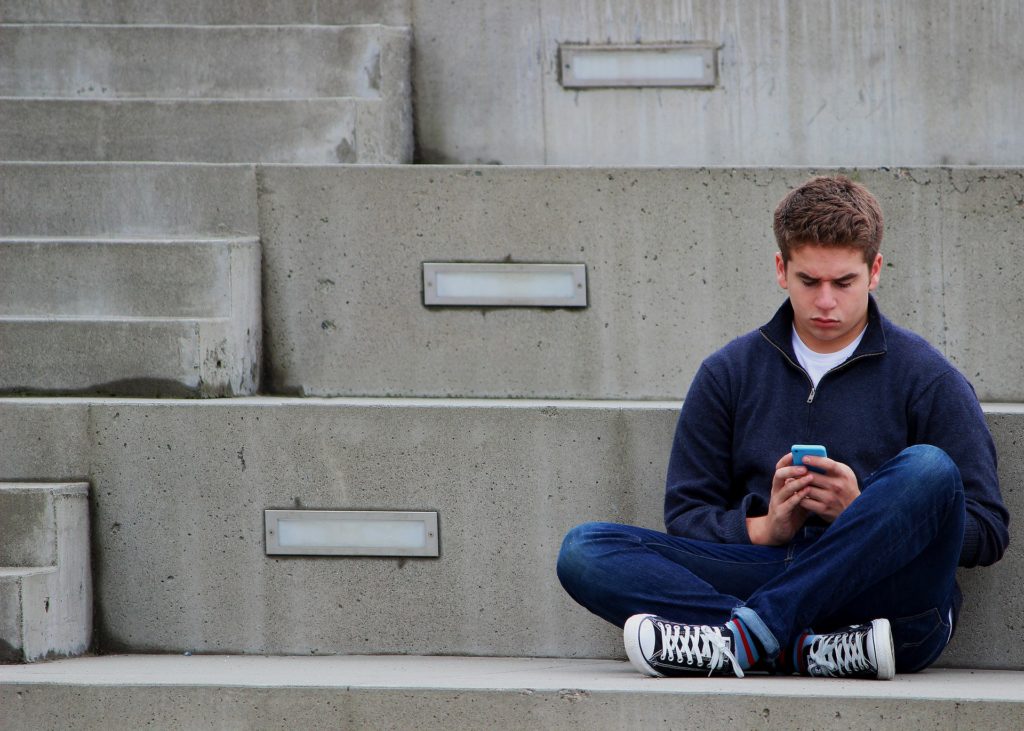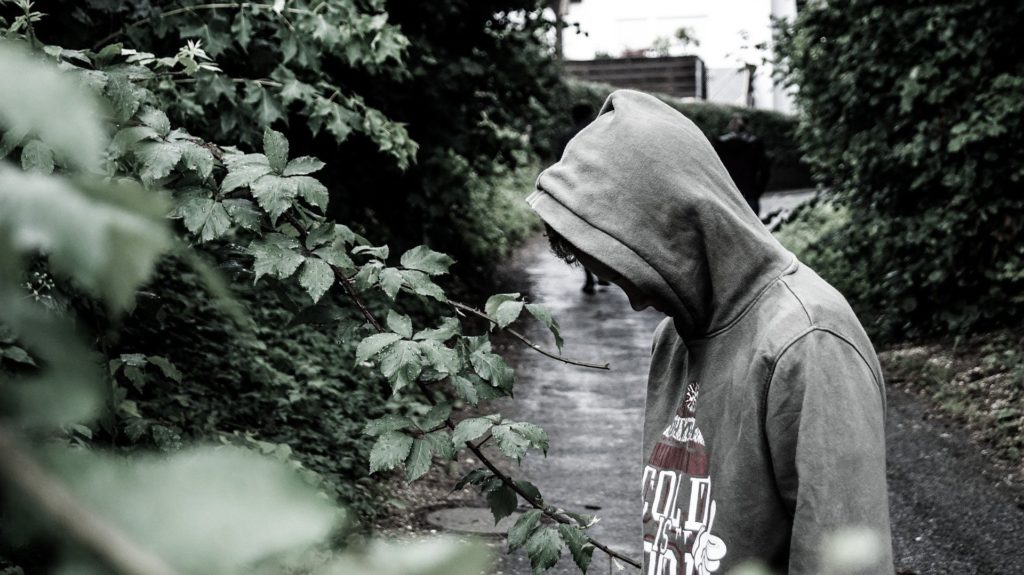Don’t Blame Your Teen’s Smartphone, Blame Their Neighborhood
“These days teenagers just stare at those damned smartphones all day instead of hanging out in the real world and actually living. Such a shame.”

Surely, you’ve heard or said some variation of this statement. It’s a common one. Countless articles, blog posts, books and research papers have been written with the direct or indirect intention of demonizing smartphones as an addictive technology rotting the minds of the young generations. I should know, I am a researcher specializing in the subject of how technology and psychology interact and I have published several academic papers on this subject.
During my research, I made an interesting observation – the majority of articles, academic papers and books on problematic smartphone use assume from the start that the smartphone itself is the main issue. Smartphone addiction is accepted as a legitimate problem, often from the first sentence, despite the fact that research is hardly conclusive on whether such a diagnosis even exists. In fact, one of the top results on Google Scholar when you type “smartphone addiction” is my paper “Is Smartphone Addiction Really an Addiction?” and in that paper we conclude that at this time there is insufficient evidence to support such a construct. So why do we keep blaming the technology itself rather than looking past the observable behavior of faces-staring-at-screens to ask why?

Why do so many teenagers “stare at screens all day instead of hanging out in the real world and actually living”? If we spent more time investigating the motivations behind the behavior, rather than fixating on the result of those motivations, we may realize that the problem is not only the smartphone; the smartphone is a tool employed to alleviate the effects of the problem. The problem is often the “real world” that the teenagers aren’t hanging out in.
Let’s take a step back and talk about adolescence first. For some reason, we often forget about teens. We talk at great lengths about children and adults, but the needs and complaints specific to teenagers we often write off as unreasonable or exaggerated or even silly. Why? Their needs and wants are just as valid and deserving of our care, attention and concern. After all, adolescence is an incredibly important developmental stage between childhood and adulthood, i.e. the transitional years between a state of complete dependence on parents/caretakers/society to a state of independence and full responsibility for one’s own actions, decisions and future. With that said, this period is characterized by several unique defining features.

Since this developmental stage is one where people are preparing to fly solo in adulthood, developing and maintaining social networks is a top priority for them. This is because in adulthood, a rich network of social contacts is one of the most important resources a person can have when trying to get a job, receive opportunities, find a partner, and lead a successful life. Thus, in adolescence it is completely natural and adaptive for people to have higher-than-average social needs. It is a characteristic feature of the developmental stage and it has been for ages. Before “why is Annie spending so much time texting?” there was “Why is Anabelle receiving so many calls on the house phone?” and before that there was probably “Why is Anatolia spending so much time in the amphitheater with the other teens?”
In the age of walkable and human-friendly neighborhoods where you could stroll over to a friend’s house, go together to the neighborhood café, shop on your local main street, have a picnic in the park, watch a movie at the nearby cinema, flirt in the diner/pub, etc. these social needs were naturally satisfied by the neighborhood, i.e. “the real world”. It was easy to simply leave one’s house, meet up with peers in a matter of minutes, and live. These days, especially for the millions of people that live in suburban sprawl, that is rarely the case. That does not mean that these high social needs go away. They are still very much present and prominent and must therefore find another outlet, which often comes in the form of technology.

Another characteristic feature of the teen years is sensation seeking – wanting to have interesting experiences and testing one’s limits, then using the subsequent feedback from the world and peers to gain a better understanding of the self and one’s role in society. Sensation seeking is like a “right of passage” into adulthood because it is the first time young people exit childhood to do adult things, make adult decisions and have adult experiences. But in order to engage in sensation seeking, there must be sensations that can be “sought”. In a normal urban environment, these kinds of experiences are found at parties, concerts, social gatherings, local festivals, theaters, museums, trips, martial arts clubs, bars/pubs, and other such places that teens are known to love and frequent. To put it simply, in a healthy community, there are things to do. But when these kinds of healthy and natural options for sensation seeking are not available, teens often turn to whatever alternatives are – ones that are often risky and dangerous. This is because the sensation seeking options that anyone can get their hands on regardless of where they are include drugs, alcohol, sex, risky driving and crime. And as we know, a tragic number of teens every year become victims of dangerous behaviors or have their lives negatively altered by them in some way.

Over 52% of US Americans report living in the suburbs, yet too rarely do we talk about the kind of life the suburbs force on their citizens, especially the most vulnerable ones. The suburbs are characterized by: dispersion and great distances between everything which can only be easily traversed by cars, zoning which is the practice of separating things like residences, commerce, work, and entertainment into distinct areas away from each other, the absence of a community core like the main street common in traditional towns, and an overall under-stimulating environment filled mostly by trees, wide streets, parking lots and cookie-cutter houses. Even if you haven’t personally lived in suburbia as a teen, just by reading that description – would you want to hang out in such a place? Would you even be able to? The answer to both questions is probably no. The suburbs became widespread with the popularization of the personal vehicle and were thus designed to adapt to it. In other words, they were not designed to be human-friendly, but rather to be car-friendly. For those who drive a car, this may not be such a big problem. But let’s not forget the millions of people who don’t drive, including everyone under the age of sixteen.

Sixteen. The peak of adolescence. The age with the highest social interaction, sensation seeking, and identity development needs, all of which cannot be successfully satisfied by the environment of so many young people in the modern world. At the same time, they can be satisfied to some extent by the devices in their pockets. Although texting is not an equivalent substitute for conversation, video watching or game playing is not the same as having real experiences, and blog writing or TikTok filming is not the same as traditional identity development, it’s SOMETHING. It’s something at a time when there is no better alternative for the satisfaction of these fundamental human needs.
This is why teenagers stare at screens so much instead of having “real” experiences. It’s not because they wouldn’t prefer to hang out with friends in the real world and have real experiences, it’s because so often they can’t. This is not their fault. It is the fault of the people who build their world, our fault, and thus it is our responsibility to fix it, especially if we choose to criticize them for doing the best they can within the conditions we have created for them. What’s more, teenagers are our future. If they are forced to grow up in environments that are sub-optimal for their healthy development and they thus do not grow up to be healthy, happy and successful adults, our future world as a whole will experience numerous ripple effects of this unfortunate reality.





Recent Comments